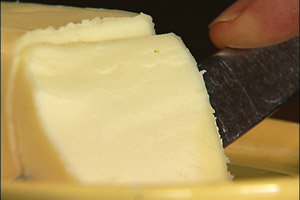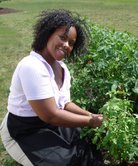Adventures in making Homemade Butter
I really do love butter. A crusty baguette with creamy European style butter is one of my favorite snacks. I love the local butter I’ve been using even more, the difference in taste between one that is made from fresh, organic cream versus the big name brands on most supermarket shelves is like night and day. I had often heard that making homemade butter was pretty easy but I preferred to leave that skill up to those much better equipped than I; that was until I was looking for ways to challenge myself a bit more in terms of food sustainability.
First thing I did was check out the history of Butter (Remember I like research) hoping to read something inspiring that would put me in the right frame of mind. The earliest recorded use of butter is around 2000 BC, its name is derived from the Greek bou-tyron which means “cow cheese” and right from the start the preferred method of production was churning. I remember watching episodes of such shows as Little House on the Prairie and thinking how cool it would be to churn butter. Seeing just how easy it is to make your own butter, especially with some of today’s conveniences. That ended up being all of the inspiration I needed to get started.
I armed myself with the simplest butter recipe I could find and decided to get to work. I was positively giddy with excitement as I pulled out the Cuisinart and prepared to begin, who would have thought you could make butter using a food processor. As I poured the cream into the work bowl I started daydreaming about making flavored butters or better yet making a butter so flavorful I could market it (A girl’s gotta dream sometime). Within minutes the cream turned a pale yellow color as the texture changed and the solid butter began to separate from the milky substance known as buttermilk. Once I drained the buttermilk then I had to wash the butter with water which was probably the strangest thing and most surprising step in the whole process, but upon further research I learned that washing the butter ensures that all of the buttermilk is eliminated. Butter that still has traces of buttermilk in it will have an off flavor and I definitely didn’t want that. Once you’ve washed the butter thoroughly then comes the hard work, churning it. Now would be the time for you to break out that antique wood churn or you can do as I did and place the butter in a mixing bowl and press the remaining excess water out of the butter using a potato masher. This can take some time; it took me about a half hour.
Once you’ve finished with the churning process the butter is pretty much ready to serve or store. I followed the recipe suggestion and used two medium sized ramekins to hold all of that creamy goodness. During the churning process the color of the butter did deepen a bit and the butter began to develop the texture of whipped store bought butter. It tasted so good I wanted to curl up on the sofa and eat it with a spoon right out of the ramekin. When it was all said and done I was pretty impressed with myself, the process was sooo much easier than I thought and the taste was positively delicious. I decided for my next get together I’ve got to have a dish of homemade butter for guests to sample but one thing that did come to mind is that it wouldn’t be very economical for every day, given the cost of fresh cream. I can’t wait to try out another batch and add some additional flavors, herb garlic butter sounds perfect right now…Do I have any cream left?
*One note; homemade butter should be served right away to experience the best flavor but will keep in the fridge for up to 4 days and adding salt prior to churning can also extend the shelf life a bit more.
Next Time: The Cheese Stands Alone; trying my hand at homemade cheese making.
Heather Jones is a wife, mother, freelance food writer, and graduate of the Institute of Culinary Education in New York City. She has worked for Gourmet Magazine, TV Personality Katie Brown, and the New York based Indian-fusion restaurant Tabla. Heather resides in New Jersey with her husband and two daughters. She is a strong supporter of the Sustainable Food Movement and believes that education is the key to making a difference.


